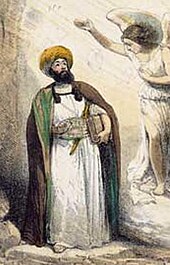In the realm of Shia Islam, Muhammad Bahari Hamadani stands as a seminal figure whose contributions resonate profoundly within the framework of Shia teachings. A North Persian scholar of the 13th century, his work traverses theological, philosophical, and ethical dimensions, offering rich insights that remain relevant in contemporary discourse. This exploration aims to elucidate the essence of Hamadani’s teachings, analyze their implications, and demonstrate how his perspectives usher a transformative understanding of Islamic spirituality.
At the core of Hamadani’s teachings lies the intricate tapestry of Islamic philosophy interwoven with mysticism. Hamadani oscillated between the exoteric (zahiri) and esoteric (batini) interpretations of the Quran. His quest for knowledge was not merely an academic endeavor but a heartfelt journey towards divine enlightenment. In examining his works, one encounters an emphasis on the pursuit of 'ilm (knowledge) as a sacred obligation, elevating the scholar’s role to that of a seeker of truth, endowed with the responsibility of guiding others. This invitation to immerse oneself in knowledge presages a critical engagement with one’s faith, challenging adherents to transcend superficial understandings and to delve deeply into the profound mysteries of existence.
Moreover, Hamadani’s theology propounds a significant axiom: the unity of existence (wahdat al-wujud). This concept articulates a monistic view of reality, positing that all beings emanate from one divine source. He elucidates that true comprehension of Allah’s unity necessitates introspection and spiritual refinement. This profound philosophical inquiry compels adherents to reconsider their relationship with the divine and the cosmos—a paradigm shift that cultivates a greater imperative for self-awareness and personal transformation.
The teaching of ethical conduct is another pivotal aspect of Hamadani’s philosophy. He championed virtues such as justice ('adl), compassion (rahma), and humility (tawadu). By promulgating these values, Hamadani delineated a blueprint for moral integrity in both personal and communal spheres. His assertion that ethical behavior should reflect one’s inner spirituality resonates today, tantamount to the Qur’anic injunctions that call for moral rectitude. Thus, a thorough understanding of his teachings fosters a moral compass, enhancing societal harmony and promoting collective well-being.
Hamadani also expounded on the significance of love (muhabbat) in the spiritual journey. In his discourse, love is not merely an emotional state; it is a transformative force that elevates the soul to a higher plane of consciousness. He articulated that love for Allah is inextricably linked to love for humanity. This ethos ignites an intrinsic connection to others, encouraging adherents to engage compassionately in the world, thereby fostering a spirit of universal brotherhood and solidarity. This concept invites a re-examination of interfaith relations and a deeper understanding of the shared values that bind humanity.
The eschatological visions articulated by Hamadani also warrant contemplation. He offered insights into the nature of the hereafter and the moral responsibilities of individuals in this life. His reflections assert that the actions of the present invariably influence one’s fate in the afterlife. By emphasizing the transient nature of worldly existence, he advocates for a life led by purpose and accountability. This notion sharpens the sense of urgency for spiritual and moral development, reinforcing the belief that life is an arena for cultivating virtues that yield eternal rewards.
Hamadani’s literary contributions are characterized by a rich amalgamation of poetry and prose, employing allegorical elements that captivate the intellect and nourish the heart. His poetic expressions, often imbued with mystical symbolism, serve as both instructional and inspirational, beckoning readers to explore the depths of their spiritual consciousness. The aesthetic dimensions of his work invite a reconsideration of literature as a vital medium for spiritual reflection, further demonstrating the interconnectedness of art and faith.
Furthermore, collective identity and the role of community in spiritual development are themes central to Hamadani’s thought. He contends that individual salvation is intertwined with community welfare, encapsulating the essence of collective responsibility. His vision of a synergistic community ethos emphasizes the importance of mutual assistance, collective prayer, and shared endeavors in fostering a vibrant spiritual ecosystem. This concept challenges the often-individualistic pursuits in modern contexts, enhancing one's understanding of the power inherent within communal bonds.
In conclusion, Muhammad Bahari Hamadani emerges as a pivotal figure whose teachings encapsulate an extensive array of theological, philosophical, and ethical insights. His elucidation of knowledge, love, and ethical conduct cultivates a nuanced understanding of Islamic spirituality that is both erudite and transformative. As contemporary adherents navigate the complexities of modern life, Hamadani’s teachings offer a profound reservoir of wisdom, encouraging individuals to embark on an introspective journey that promises not only personal enlightenment but also a deeper connection to the community and the divine. Thus, embracing and disseminating the teachings of Hamadani may indeed serve as a beacon of hope, fostering a renewed commitment to the foundational principles of Shia Islam in an ever-evolving world.


